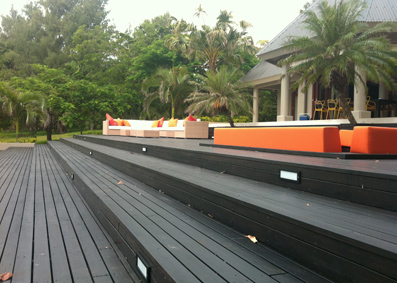May is the perfect time to plant a herb pot or corner in the garden room. Growing your own, rather than finding the culinary kind in the supermarkets, can cut your carbon footprint and discourage the crazy air-freighting of plants. Try planting what you know will be useful to you. As you experience them through the seasons, they’ll teach you where they do best just as the garden in general will show you what works in it and what doesn’t.
Basil tends to do better on a windowsill inside for me but you might have the benefit of a sheltered sunny spot for it outside. I’ve watched it thrive in southern England, although potted, outside. Parsley is easier to grow as the curly variety and will do well in a shaded area. My flat leaved one is preferable for cooking and for salads but would rather sit inside with the basil in my house. Both these specimens can be germinated from seed in Feb/March or plug planted at this time of year.
Tarragon, dill and fennel – the aniseeds – are hardier and can tolerate sun and shade. Fennel will need a bit of space all to itself to develop and reach its full height – taller than me! The bronze variety adds colour contrast to an otherwise green garden bed and will regenerate every spring.
Chives are a delightful confined, short and compact plant– keep them watered and they will always be ready for use. They will die down overwinter but return every year.
Thyme and Rosemary like it hot, sunny and well drained and will accept being clipped regularly for the kitchen as long as you keep the scissors back from the woody stems! Just take the new green growth and the plant will keep producing it.
Sage is a constant showman and easy to grow from seed. Great with onion and chicken and the fresh leaf tea makes an excellent gargle for sore throats – an instant anaesthetic to the tonsills with antimicrobial action. Also a magnet for pollinators.
Then there’s mint – fragrant, fresh, rampant and in many varieties. Suitable for adding to drinks, deserts, salads, meat dishes, soups. If you want to introduce more than one variety of mint, keep them well apart. Folklore has it that planting them within reach of each other causes a revertion or merging of the varieties. I keep mine in large pots to prevent the vesuvial rambling. The one pictured below is part of my grandfather’s old mint plant which must be at least 100 years old now. He used it in a remedy for his neighbours, friends and family.
Herbs are a most wonderful collection of plants, for not only do they look good, smell good and do you good, but they can transform a meal into a tasty feast. Anyone, with just the smallest space, can grow them. Care, generally, is easy – well drained soil with enough nutrients to sustain growth and water after the sun has left the plant! Watering in direct sun can burn the leaves – so an evening watering can trip with soft water gives them all the best chance.
May has turned with the rain into a blooming time for herbs: my lemon geranium is not only scenting the way to the studio as the leaves are brushed past but has produced award-worthy numbers of flowers. It’s fresh, comforting smell soothes the nerves and encourages a relaxed, clear state of mind.
It’s got to be Lily of the Valley for the prize this year. Mine has naturalized beneath Japanese Acers and spread magnificently to cover the shady area. An ancient indiginous remedy for slow heart rate and a tonic for the circulatory system, it also heralds a really heady scent which can perfume the house for weeks.
























































